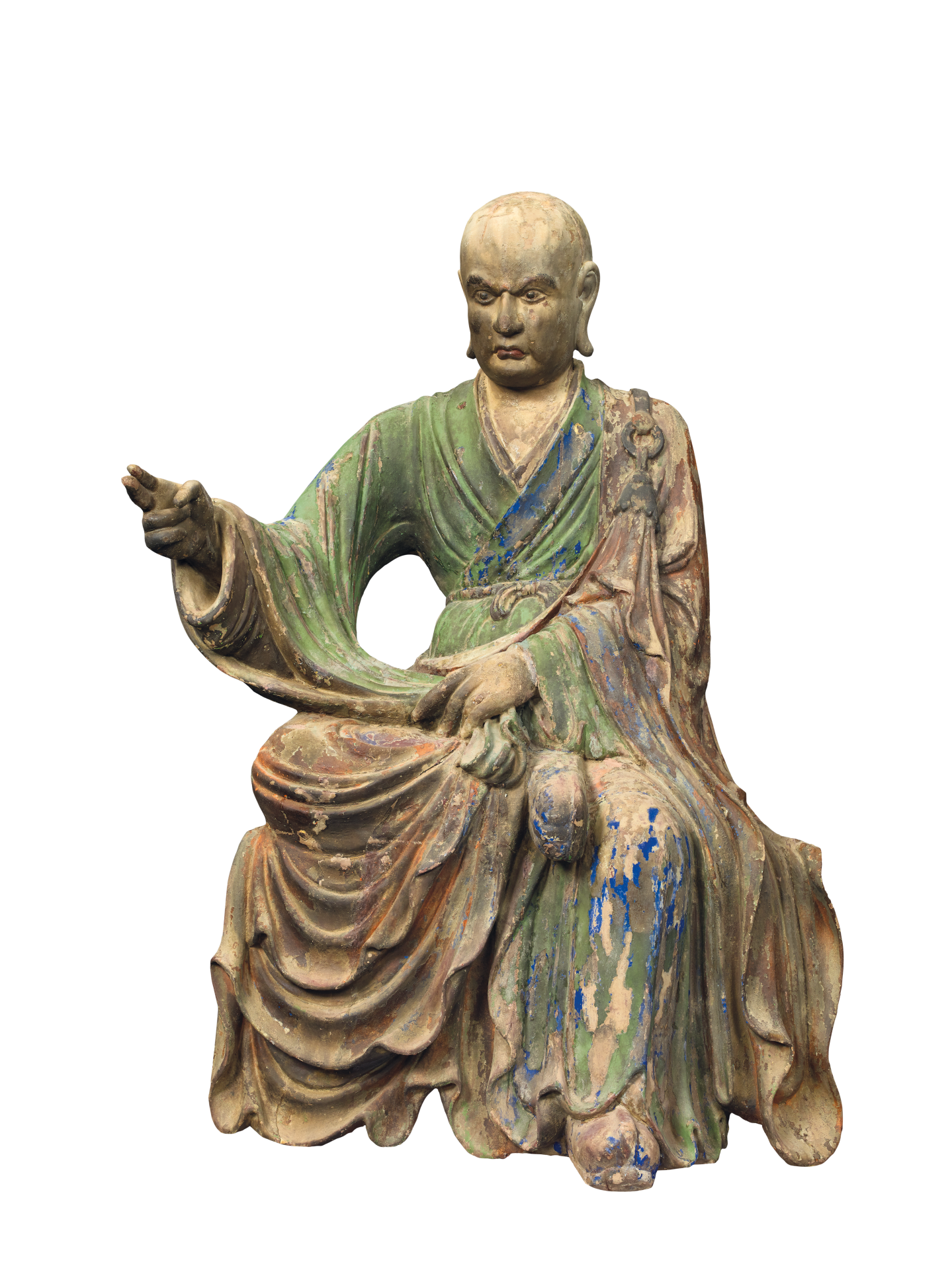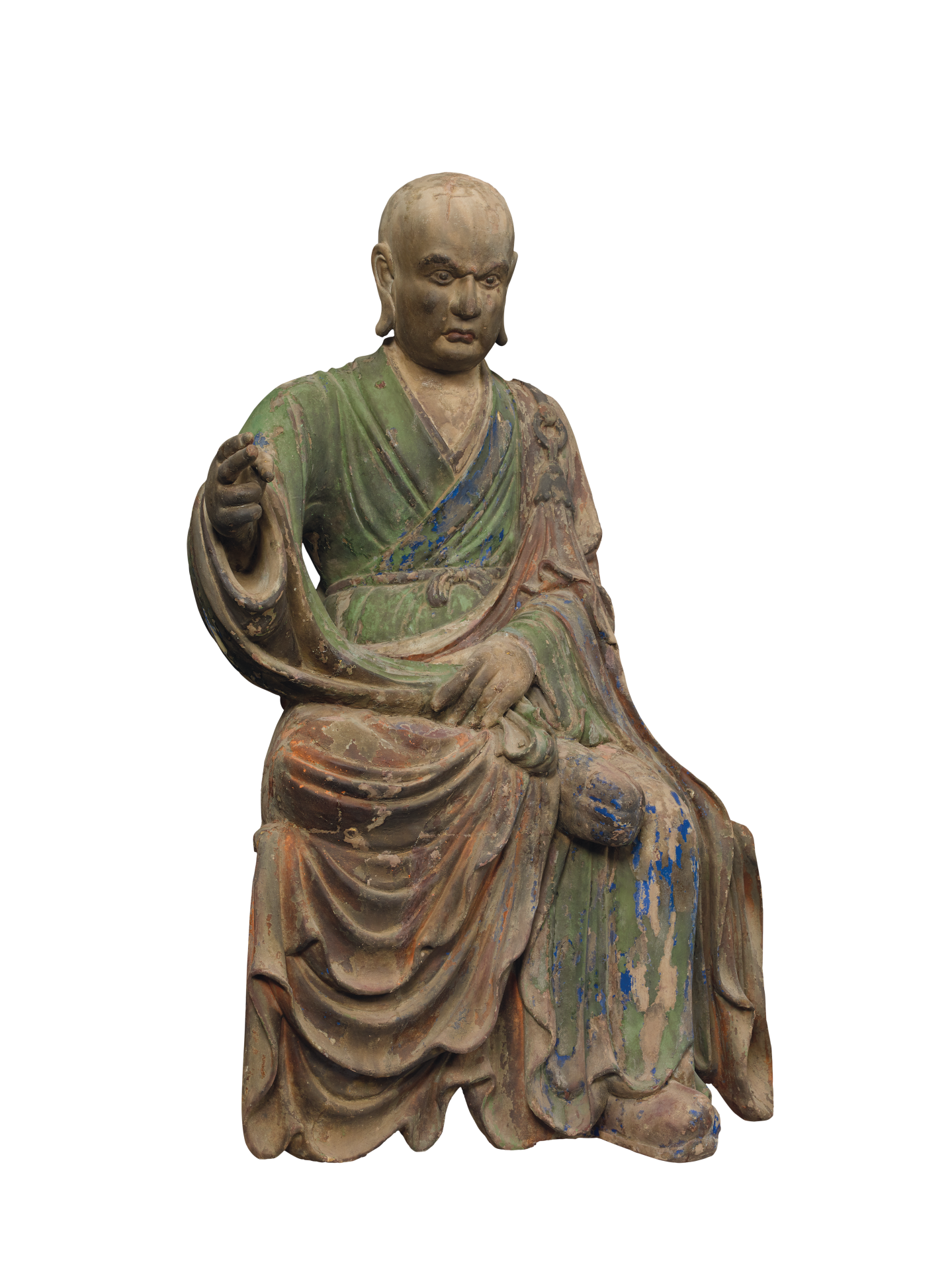Seated Luohan
Polychrome stucco statuary is a type of traditional Chinese craft making use of the malleability of clay material to produce a great variety of images. Since clay was easily accessible, this material has been commonly used in Buddhist statuary. The stucco is basically made of locally mined clay that binds other aggregates such as cotton wool and paper fibres. The mixture is applied to the entire surface of a wooden or iron frame forming the core of the statue. Afterwards, the clay surface is fully coated with hemp fibres before neatly plastered over with a layer of fine clay. Finally, the bodily features and garments of the statue are painted with mineral pigments of different colours.
This polychrome stucco Luohan statue of the Ming dynasty (1368-1644), with an intact shape and well-preserved pigments, is a rare example of its kind. The Luohan has the face of a middle-aged man with knitted eyebrows, round bulging eyes and a solemn and slightly angry expression. He is seated in ‘relaxation posture’ (lalitāsana). His right arm extends forward, with index finger and middle finger protruding closely, while the other fingers and the thumb folded into the palm. The left hand is placed in front of the belly and holding the lower end of the right sleeve. The gesture suggests that he is engaged in a scriptural debate. The Luohan wears a green robe over an undergarment. The dark brown kāṣāya draping from his left shoulder and wrapping diagonally from behind around the right side of the abdomen is anchored by a ring below his left shoulder, with a swag covering his left upper arm.
This statue shows clay’s full malleability capacity as a material. The nuance of the muscular undulation and the representation of the drapery are modelled with great precision. For example, the distended blue veins on the forehead, the expression of single-pointed concentration on his face, the undulation of the ridged drapery folds in different curvatures, and the treatment of fabric wrinkling under different stress intensities, have added many lively touches to the piece.

